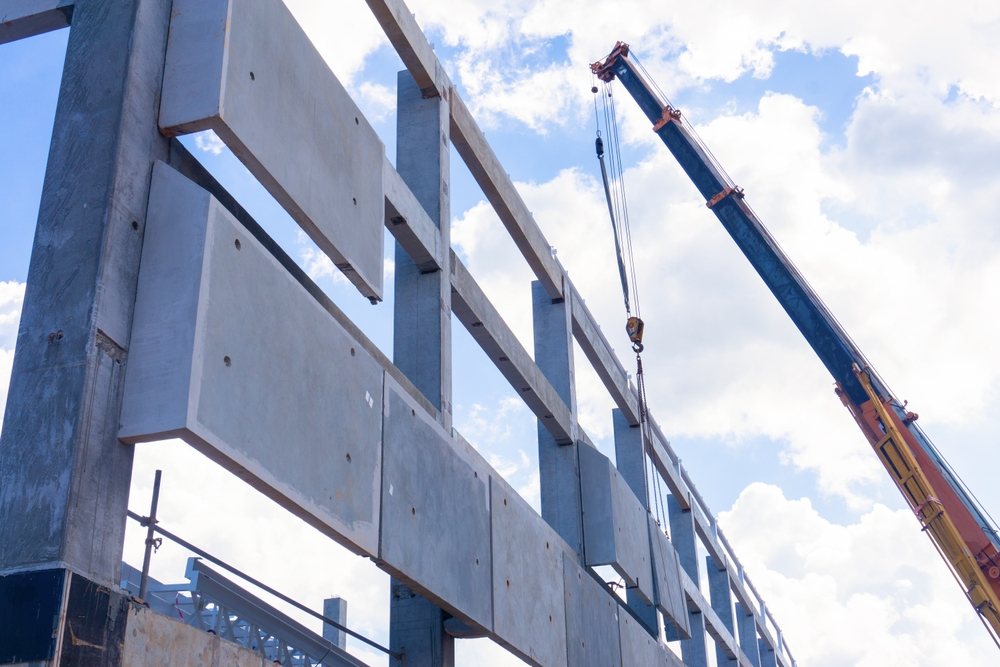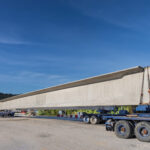The construction industry is no stranger to the costly consequences of on-site errors, especially in precast construction. Misalignment, incorrect fitting, and the need for rework are common challenges that can lead to significant delays and budget overruns. However, with precise precast detailing, these issues can be effectively minimized, ensuring components fit perfectly during assembly. In this article, we’ll explore how precast detailing can eliminate costly on-site errors, focusing on the importance of precision, advanced software, and collaboration between detailers, fabricators, and erectors.
- Precast detailing ensures precise component fitting, reducing on-site errors.
- Advanced software like Revit and Tekla enhances the accuracy of precast detailing.
- Collaboration between detailers, fabricators, and erectors is crucial for minimizing errors and reducing costs.
Understanding Precast Detailing
What is Precast Detailing?
Precast detailing is a specialized process in the construction industry that involves creating detailed drawings and models for precast concrete components. These detailed plans ensure that each component is manufactured to exact specifications, reducing the likelihood of errors during assembly. Precast detailing is essential because it serves as the blueprint for fabricators and erectors, guiding them to assemble components accurately and efficiently.
Precast detailing is more than just creating drawings; it’s about ensuring the precision and quality of each component. By focusing on every detail, from the size and shape of the components to the placement of reinforcing steel, precast detailing minimizes the risk of on-site errors, ultimately saving time and money for contractors and fabricators.
The Common On-Site Errors in Precast Construction
On-site errors are a significant pain point in the precast construction process. Some of the most common errors include:
- Misalignment of Components: Incorrect alignment during assembly can lead to gaps, misfits, and structural weaknesses.
- Incorrect Fitting: If components are not fabricated according to precise measurements, they may not fit together correctly, leading to costly adjustments.
- Component Damage: Poor handling and incorrect installation can result in damaged components, requiring replacements or repairs.
These errors often lead to costly rework, increased labor costs, and project delays. However, with accurate precast detailing, these issues can be significantly reduced, if not entirely eliminated. Precast detailing provides the necessary precision to ensure that every component fits perfectly, minimizing the need for on-site adjustments.
Learn more about how our precast detailing services can help you avoid these common pitfalls and ensure a smooth construction process.
How Precast Detailing Eliminates On-Site Errors
Advanced Software in Precast Detailing
The use of advanced software is a game-changer in precast detailing. Tools like AutoCAD, Revit, and Tekla enable detailers to create precise models and simulations that reflect the real-world assembly process. These tools allow detailers to identify and address potential issues before they reach the construction site, drastically reducing the risk of on-site errors.
For example, Tekla Structures offers comprehensive solutions for modeling and detailing precast components. This software allows for the simulation of component assembly, enabling detailers to detect misalignments and other potential problems early in the process. This proactive approach ensures that when the components are fabricated, they are ready for seamless assembly on-site, with minimal risk of errors.
Explore how Tekla Structures is revolutionizing precast construction.
The Collaboration Between Detailers, Fabricators, and Erectors
Effective collaboration between detailers, fabricators, and erectors is crucial for minimizing on-site errors. When these teams work closely together, they can anticipate potential issues and develop solutions before they become costly problems on-site.
For instance, during the detailing process, fabricators can provide input on the feasibility of designs, ensuring that the components can be manufactured as intended. Similarly, erectors can offer insights on the practical aspects of assembly, helping to identify any potential challenges in the field.
This collaborative approach not only reduces the likelihood of errors but also fosters a more efficient and streamlined construction process. By working together, these teams can ensure that every component is detailed, fabricated, and assembled with precision, resulting in fewer errors and reduced costs.
Watch this video to see how BIM (Building Information Modeling) is transforming the way teams collaborate in precast construction.
Best Practices for Effective Precast Detailing
Implementing Quality Control Measures
Quality control is vital in the precast detailing process. Regular reviews and updates to the detailing process ensure that all components meet the required standards before they are fabricated. By implementing rigorous quality control measures, contractors and fabricators can catch errors early and prevent them from becoming costly issues on-site.
Implementing a robust quality control system allows teams to:
- Identify Potential Issues Early: By reviewing the precast detailing at multiple stages, detailers can catch and correct errors before they lead to costly rework on-site.
- Ensure Consistency: Quality control measures ensure that all components are consistent with the project’s design requirements, reducing the risk of misalignment and fitting issues during assembly.
- Maintain Communication: A feedback loop between detailers, fabricators, and erectors ensures that any concerns or adjustments are communicated and addressed promptly.
This proactive approach to quality control not only minimizes on-site errors but also enhances the overall efficiency of the construction process, leading to timely project completion.
Training and Development for Detailers
The success of precast detailing heavily relies on the skills and expertise of the detailers involved. Continuous training and development are crucial to keep detailers updated on the latest software tools and best practices in the industry. Key areas for training include:
- Software Proficiency: Detailers should be proficient in the latest modeling software like Tekla Structures, Revit, and AutoCAD. Regular training sessions and certifications can help them stay updated with new features and techniques.
- Understanding Fabrication and Erection Processes: Detailers should have a solid understanding of the fabrication and erection processes to create practical and feasible designs. This knowledge helps them anticipate potential challenges and design components that are easier to fabricate and assemble.
- Collaborative Skills: Training should also focus on enhancing communication and collaboration skills. Effective collaboration between detailers, fabricators, and erectors is vital for minimizing errors and ensuring that all team members are aligned on project goals.
Investing in the continuous development of detailers ensures that projects are completed with high precision, reducing the likelihood of on-site errors and associated costs.
Real-Life Examples of Successful Precast Detailing Projects
Real-life case studies provide concrete examples of how precast detailing can lead to successful project outcomes with minimal on-site errors. Here are a few examples:
- Case Study 1: High-Rise Office Building
In this project, precise precast detailing was critical to ensuring the correct alignment of precast panels in a high-rise office building. By using advanced modeling software and close collaboration between the detailing and erection teams, the project was completed with minimal on-site adjustments, saving significant time and costs. - Case Study 2: Large-Scale Infrastructure Project
A large-scale infrastructure project involving precast concrete beams and columns benefited greatly from detailed and accurate precast modeling. The use of Tekla Structures allowed the team to identify potential misalignments and address them during the detailing phase, resulting in a smooth and error-free assembly on-site. - Case Study 3: Complex Architectural Facade
The construction of a complex architectural facade required highly precise precast components to achieve the desired aesthetic. Through meticulous precast detailing and regular quality checks, the project was able to achieve the architect’s vision without any costly rework, maintaining both the timeline and budget.
These examples highlight the importance of investing in accurate precast detailing and how it can lead to successful project outcomes by reducing the risks of on-site errors.
FAQs
What is precast detailing and why is it important?
Precast detailing is the process of creating detailed drawings and models for precast concrete components, ensuring they fit together precisely during assembly. It is important because it reduces the risk of costly on-site errors, such as misalignment and incorrect fitting, by providing accurate and detailed blueprints for fabrication and erection.
How does advanced software contribute to the success of precast detailing?
Advanced software tools like Tekla Structures and Revit enable precise modeling and simulation of precast components. These tools help detect potential issues early, allowing for adjustments before fabrication begins, which reduces the likelihood of errors during on-site assembly.
What are the common on-site errors that precast detailing can prevent?
Precast detailing can prevent several common on-site errors, including misalignment of components, incorrect fitting, and damage to precast elements. By providing precise instructions and detailed models, precast detailing ensures that each component is manufactured and assembled correctly.
How can collaboration between teams reduce on-site errors?
Collaboration between detailers, fabricators, and erectors is crucial for minimizing on-site errors. Effective communication ensures that all teams are aligned on the design and construction processes, allowing them to anticipate and address potential issues before they arise.
What are the cost benefits of investing in high-quality precast detailing?
Investing in high-quality precast detailing can significantly reduce costs associated with rework, delays, and increased labor due to on-site errors. Accurate detailing ensures that components fit together as intended, minimizing the need for costly adjustments during construction.By focusing on precise precast detailing, construction professionals can eliminate many of the costly on-site errors that plague precast projects. Whether through the use of advanced software, effective collaboration, or rigorous quality control, the benefits of investing in high-quality detailing are clear: reduced costs, fewer delays, and a more efficient construction process overall.








